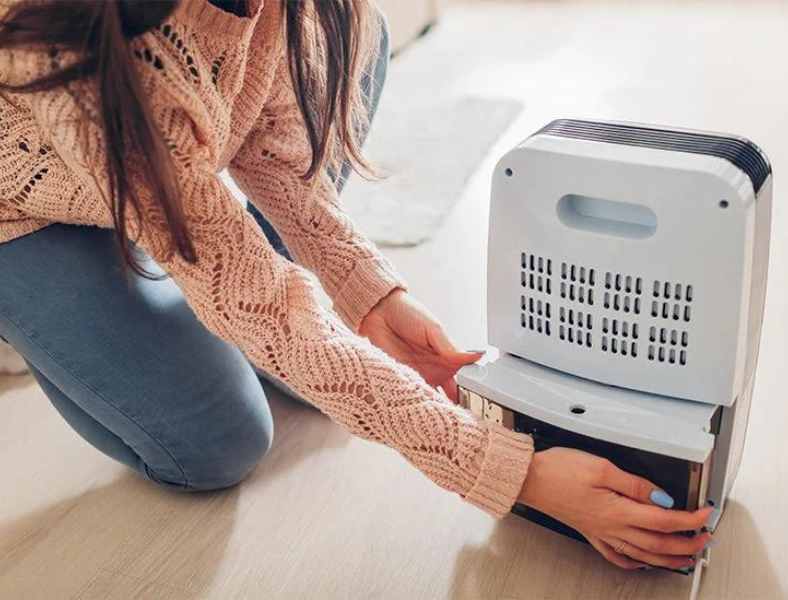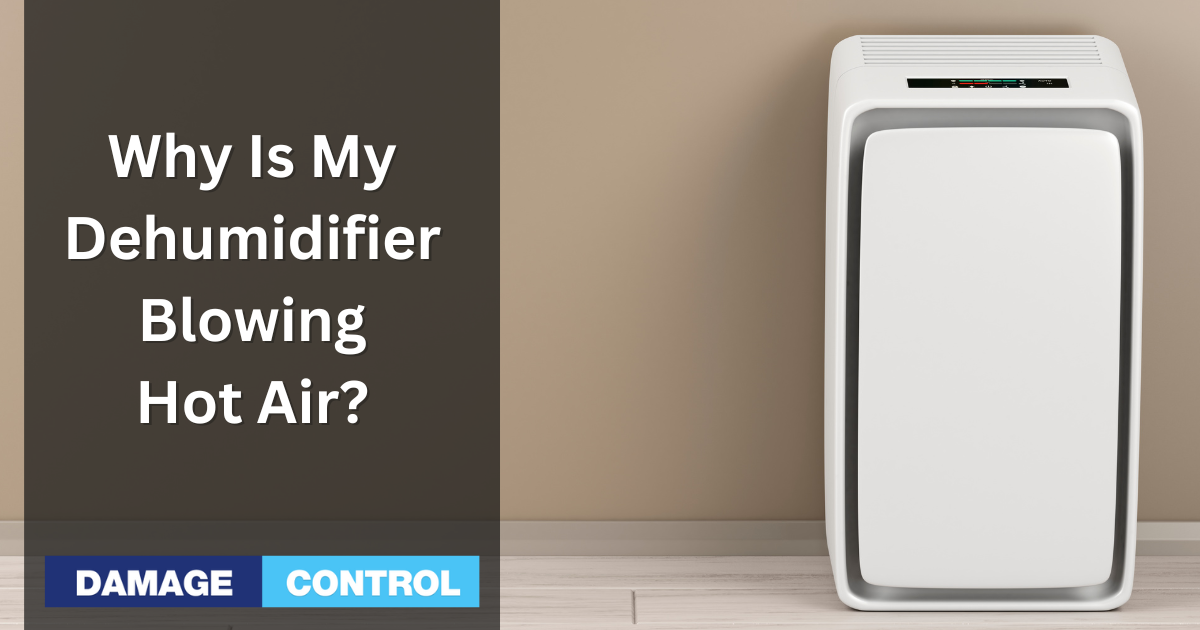Your dehumidifier blowing hot air is typically normal, but there may be a problem if it's too hot.
Don't sweat it – or maybe do, because today we're going to help you figure out why your dehumidifier is blowing hot air.
Let's dive right in!
Understanding Dehumidifiers
How Dehumidifiers Work
Dehumidifiers are machines that lower the air's moisture. People use them in homes and offices to stop mold, dampness, and bad smells. These devices draw air in, take out extra moisture, and then blow dry air back out.
There are mainly two kinds of dehumidifiers: refrigerant and desiccant. Refrigerant dehumidifiers pull air in and move it over cool coils. The moisture in the air turns to water on these cold coils. This water then gets collected in a container or drained out.
On the other hand, desiccant-based dehumidifiers use a moisture-absorbing material to pull moisture out of the air.
Dehumidifier Components
Dehumidifiers use several parts to pull moisture out of the air. Like the heart, the compressor squeezes the exhaust air into the refrigerant. This refrigerant then moves through coils, taking heat and moisture from the air. The air, now cooler and drier, goes back into the room. The water taken from the air collects in a container or gets drained.
The air filter is also crucial. It catches dust and dirt from the air before entering the dehumidifier. A dirty filter can block airflow, making the dehumidifier work less well and sometimes even blow out hot air.
Understanding the different components and how they work together is essential in troubleshooting and fixing common dehumidifier issues.
Dehumidifier Blowing Hot Air: Common Causes

Hot air blowing out of a dehumidifier can be a frustrating and uncomfortable problem. Here are some of the most common causes of this issue:
Refrigerant Leakage
If your dehumidifier blows hot air, it might be because it has low refrigerant. A leak in the refrigerant can happen if the line or compressor is damaged. You can verify a leak if the air is warm, a hissing sound or the dehumidifier isn't working.
If you have a refrigerant leak, turn off and unplug your dehumidifier immediately. Then, call an HVAC technician to check and fix the problem.
Normal Operation
Hot air from your dehumidifier can be normal. Dehumidifiers create heat while removing moisture; this warm air must go somewhere. But, if the hot air is too much or makes you uncomfortable, it's good to check why that's happening.
Dirty Air Filter
A clogged air filter often makes a dehumidifier blow hot air. When the filter is dirty, it blocks the airflow and makes the dehumidifier blow hot air. This also makes the dehumidifier work harder and produce more heat.
It's important to clean or change your air filter often to avoid this problem. Look at your dehumidifier's manual to see how often the maker suggests doing this.
You may be able to find a replacement for your dehumidifier's air filter here.
Frozen Evaporator Coils
Malfunctioning Compressor Or Fan
A malfunctioning compressor or fan can also cause a dehumidifier to blow excessively hot air out. If the compressor isn't running, the dehumidifier won't be able to lower the temp properly. If the fan in your dehumidifier isn't pushing air over the evaporator coils, it won't remove moisture well.
If you think there's a problem with the compressor or fan, first turn off and unplug your dehumidifier. Then, check whether the compressor, dehumidifier, or fan works correctly. If you're unsure what you find, calling a professional for help is best.
Preventive Measures And Maintenance Tips
Taking preventive measures and maintaining your dehumidifier can help prevent issues like hot or warm air from blowing out. Here are some tips to keep your dehumidifier in top shape:
Proper Placement
The spot where you put your dehumidifier can affect how well it works. To make sure it runs efficiently and to avoid problems like frozen coils, place it in an area that's warmer than 60°F (15.5°C).
Don't put your dehumidifier near things that make heat or in direct sunlight. Also, make sure there's enough space around it for air to move freely.
Keeping the right humidity level in your room can help your dehumidifier run better and handle hot air more effectively. The best humidity is between 30% and 50%.
To keep an eye on the humidity, use a hygrometer. You can buy one on its own or use the one that's built into your dehumidifier.
Regular Cleaning And Maintenance
Ensuring optimal performance is essential to prevent issues like hot and warm air blowing out of it. Here are some key maintenance tasks to perform:
- Clean or replace the air filter regularly.
- Clean the exterior of the dehumidifier with a damp cloth.
- Check the water container or drain hose for any clogs or blockages.
- Inspect the power cord for any signs of damage.
Check your dehumidifier's manual for the manufacturer's recommended maintenance schedule and follow it closely.
You can also use something like Humidipure to prevent bacteria buildup.
Professional Maintenance
While regular maintenance can help prevent most issues, having your dehumidifier professionally serviced every few years is still a good idea. An HVAC technician can inspect the unit for potential issues and perform necessary repairs or replacements.
Regular maintenance by a professional can help prolong the service life of your dehumidifier and ensure that it's working at peak performance.
Can I Run My Dehumidifier 24/7?
It's generally considered safe to run your dehumidifier all day, but follow the manufacturer's instructions, and don't forget to clean or replace the air filter regularly.
How Often Should I Clean Or Replace My Dehumidifier's Air Filter?
It depends on your usage and the manufacturer's recommendations. Check the filter every two weeks and clean or replace it as needed.
Is It Normal For My Dehumidifier To Make Noise?
Some noise is normal, but if it's excessively loud or unusual, it may indicate a problem.
How Do I Know If My Dehumidifier Is Working Efficiently?
Check the humidity level in your space and see if it's within the ideal range (30-50%). Grab a handy tool called a hygrometer (they're not too expensive and super easy to use) to precisely read your indoor humidity. Just pop it in the room you want to check, and you'll know if you live in a desert or a jungle!

